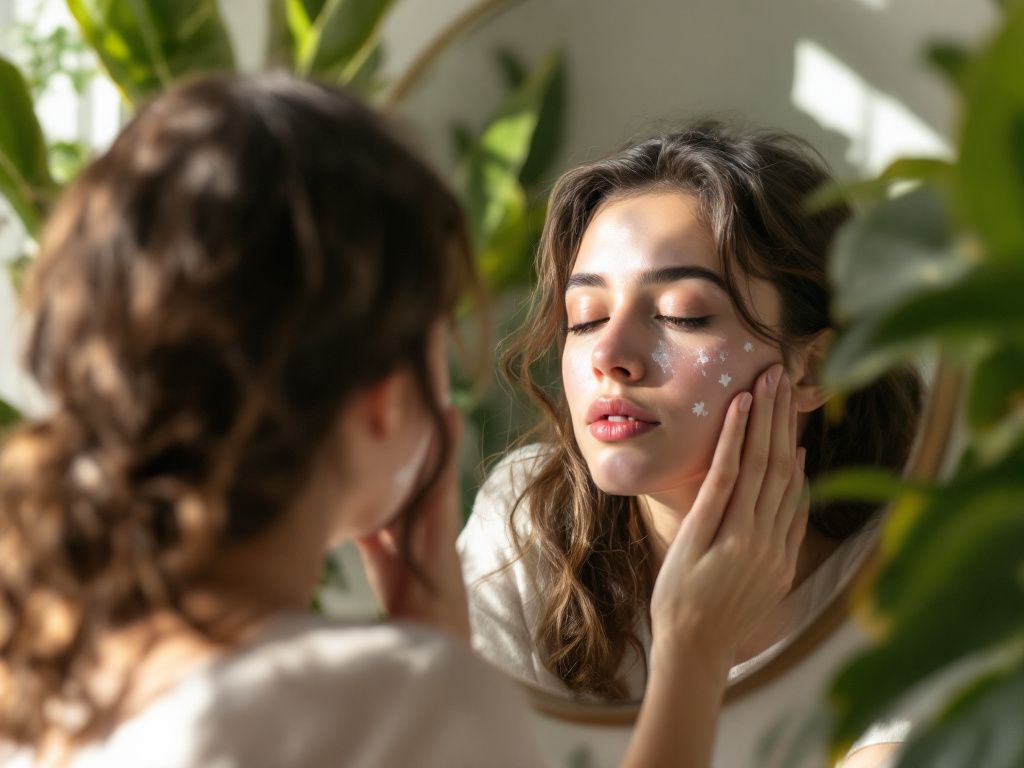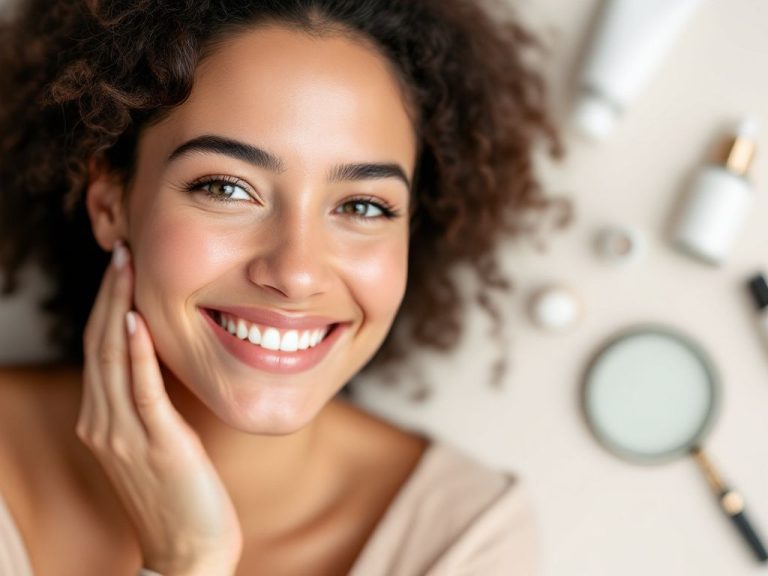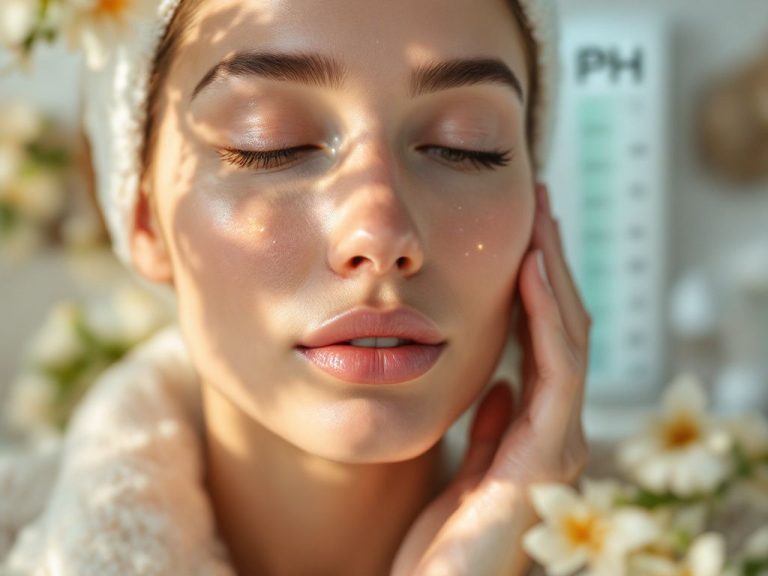Hey there, fellow skin-seeker! Let’s imagine a morning. You wake up, glance at yourself in the mirror, and bam! A newly formed, deep-rooted breakout has set camp smack on your face. If you’ve ever dealt with stubborn cystic acne, you’ll know the feeling—that frustrating cycle of exasperation and hopelessness. I totally get it. This stuff isn’t just skin deep.
Cystic acne, for anyone navigating this bumpy road, is like that annoying neighbor—impossible to ignore and hard to live with peacefully. But what if we took a closer look? What if we could really understand what’s going on and chart a plan of action that actually makes sense?
Table of Contents
ToggleWhat Exactly is Cystic Acne?
Okay, cystic acne, it’s the big, bad monster of the acne world. It’s not just about surface-level pimples; we’re talking deep, painful bumps locked under layers of skin. Think of them as icebergs, where the majority hides beneath the surface. This type of acne doesn’t just look inflamed; it feels inflamed, often resulting in tenderness and, oh boy, it can really hurt!
If you dive into the cystic acne science, you’ll find it’s a result of four main culprits: inflammation, bacteria, excess oil, and clogged pores, intertwining like a messy conspiracy. Each plays a vital part in crafting these stubborn zits.
Sometimes it feels like your face has declared war. And here’s the kicker—even folks in their 20s and 30s are dealing with it. It’s not a menace reserved solely for dramatic teenage years.
Peeling Back the Layers: Cystic Acne Science
You see, acne of the cystic kind isn’t just a random roll of the dice. It’s firmly rooted in science. Hormones often take the blame; they stir up our oil glands, causing them to go into overdrive. This excess oil—slick and persistent—gets trapped with dead skin cells within our pores. When bacteria joins this party (with uninvited enthusiasm), you’ve got yourself the perfect recipe for cystic breakouts.
In some cases, underlying health issues like polycystic ovary syndrome (PCOS) or other hormonal imbalances can amp up acne’s severity. Stress and diet aren’t completely off the hook either—they’re often seen joining the backstage chaos.

Factors Fanning the Flames
Let’s take a closer look:
- Hormones: Think about your body’s hormone spikes—puberty, menstruation, or stress-induced adrenaline. They flare up oil glands like fireworks on New Year’s Eve.
- Bacteria: The Propionibacterium acnes (P. acnes) is acne’s loyal sidekick, escalating inflammation.
- Diet and Lifestyle: High glycemic foods and dairy have stubbornly clung to the “suspects” list, albeit with varying evidence. Stress, lack of sleep, and environmental factors proclaim ownership of adding fuel to the fire.
Now, let’s rearrange these pieces so you can piece together a wholesome recovery strategy.
Creating a Game Plan
Identifying problem spots is a start, but let’s roll up our sleeves and get to solving this puzzle. You know that burning moment when you’re ready to go online shopping, convinced a miracle cure is out there, somewhere in a chic bottle or a nicely packaged set? Trust me, I’ve been there, pacing in front of the skincare aisle.
To get things under control, it might demand a mix of solutions, but here’s a solid starting point.
Professional Treatments

- Dermatologist Visits: Seeing a professional can considerably change the game. They’re armed with an arsenal that includes oral antibiotics, retinoids, and especially for severe acne, medications like isotretinoin (often the last resort).
- Cortisone Injections: For those isolated nightmarish cysts that threaten your peace, cortisone injections directly deflate them quicker than watching a joke fall flat.
- Blue-Light Therapy: If you’re into tech, go for light therapy. With blue light, you’re essentially zapping bacteria, right out of existence. Now, doesn’t that sound intriguingly sci-fi?
At-Home Approaches
- Skincare Routine Revamp: Strip it back to basics—a gentle cleanser, a solid moisturizer, and the superstar—sunscreen. Trust me on this—the simpler, the better.
- Spot Treatments and Masks: Specific to cystic acne, you want to look at products with benzoyl peroxide or salicylic acid, focusing on those angry flags of rebellion. Also, give clay masks a shot—they’re superb at absorbing extra oil.
- Dietary Adjustments: You’re not hearing me advocating kale smoothies all day, but cutting back on sugary colas, delectable fast-foods, or lactose-laden goodies could make a sincere difference.
Let’s circle back to consistent care—it’s really about cultivating those habits. Think of your skin as a quirky pet; it demands constant attention, with a sprinkle of patience and a slice of goodwill.
Mind Your Mind-space and Stay Kind
Here’s one tangent often overlooked—the emotional side of the acne journey. Causing more than just physical distress, severe acne can trickle down to affect mental health. Some days you just want to pull a no-show, staying safe under the covers, away from prying eyes.

Remember this—acknowledge the feelings. And then lift your chin up; give yourself the warmth you’d offer a friend stepping through a bad patch. Engage the right people, forge ahead with the right information, and progress will unfold—perhaps slow, nonetheless steady.
Putting it All Together
So, here it is—a cover-to-cover tour through understanding cystic acne, with a glimpse into its biological choreography and some battle-ready tools to arm yourself with. Let’s make way for a gradual, informed experience where things add up in your favor.
Reflect and revisit. Those morning mirrors don’t have to evoke exasperation. Let your skin narrative be one of understanding, realizing that sometimes these battles are long, yet never futile.
Key Takeaways
- Foundation of Cystic Acne: It’s an amalgamation of oil glands on overdrive, bacterial anarchy, and some rogue hormones holding the reins.
- Plan of Action: Combining professional treatment with slowly integrated at-home care paves a genuine path.
- Stay Healthy, Bold, and Hopeful: Mind and body entwined; asserts patience and positivity as markers on your journey.
Wherever you’re at right now, take one small step into empowerment, obviating myths, setting traumas aside, and making tangible, informed choices. Here’s to mirrors reflecting conscious choices, self-care rituals, and, more crucially—your unique narrative of persistence and poise.
And as you wander this windy road, reach out, connect. You’re not alone on this stage; we all stumble add some flair and rise anew. Cystic acne? It won’t define you. Give it a nod—know it—but then shift your focus. Your face is just the beginning of the fantastic, nuanced story that unfolds with you in central lead.
Stepping forward, one breath, one graze, one little skin win at a time—I’m hanging in there with you.
Frequently Asked Questions
What is cystic acne?
Cystic acne is a severe form of acne characterized by large, red, painful breakouts deep in the skin. These breakouts are often filled with pus and can be tender or painful to the touch. It occurs when a pore in the skin gets clogged with dead skin cells and bacteria, leading to deep inflammation and infection[1][3][4).
What causes cystic acne?
Cystic acne is primarily caused by hormonal changes, particularly the increase in androgen hormones during puberty, menstrual cycles, pregnancy, and menopause. Other factors include genetics, certain medications, skin care products, high humidity, sweating, and stress. It is not caused by poor hygiene, sexual activity, or the consumption of greasy or spicy foods[1][2][4).
How is cystic acne treated?
Treatment for cystic acne often involves prescription medications such as oral antibiotics to control bacteria and inflammation, birth control pills to regulate hormones, benzoyl peroxide to kill bacteria, retinoids to unplug pores, and isotretinoin for severe cases. Topical treatments and injections of steroids into cysts may also be recommended. Additionally, laser therapy, chemical peels, and microneedling patches can be used to treat and prevent scarring[1][3][5).
What are the potential complications of cystic acne?
Cystic acne can lead to permanent scarring, including deep, tiny holes (icepick scars), wider pits, and large, uneven indents. It can also cause emotional distress due to its impact on facial appearance. Preventing the picking or popping of cysts is crucial to avoid spreading the infection and reducing the risk of scarring[1][2][3).
References- WebMD. (2024). Cystic Acne: Definition, Causes, Treatment, and Prevention.
- MedicalNewsToday. Cystic acne: Causes, symptoms, and treatments.
- Healthline. (2017). Cystic Acne: Identification, Causes, and More.
- UPMC. (2023). Treating Cystic Acne: Causes, Symptoms, and Remedies.
- Wiley Online Library. (2023). Cystic acne treatment: A comprehensive review.








